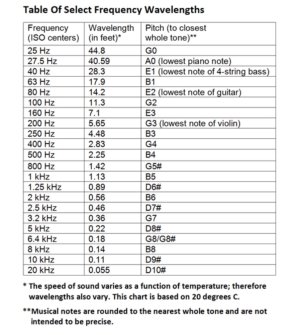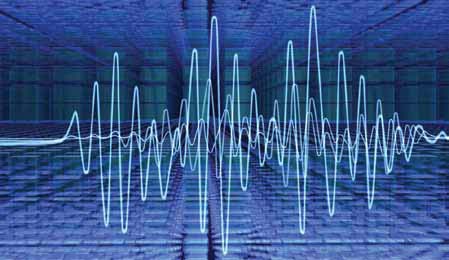rwnano
Well-Known Member
What I have learned after six decades in audio (call it my journalistic legacy):
I've taken the following 10 items from https://www.biline.ca/audio_critic/audio_critic_web1.htm#acl.1) Audio is a mature technology. Its origins go back to Alexander Graham Bell and Thomas Alva Edison in the 1870s. By the early 1930s, at the legendary Bell Laboratories, they had thought of just about everything, including multichannel stereo. The implementation keeps improving to this day, but conceptually there is very little, perhaps nothing, really new. I have been through all phases of implementation—shellac records via crystal pickups, LPs via magnetic and moving-coil pickups, CDs, SACDs, Blu-rays, downloads, full-range and two/three/four-way mono/stereo/multichannel speakers, dynamics, electrostatics, ribbons (shall I go on?)—and heard incremental improvements most of the time, but at no point did the heavens open up and the seraphim blow their trumpets. That I could experience only in the concert hall and not very often at that. Wide-eyed reviewers who are over and over again thunderstruck by the sound of the latest magic cable or circuit tweak are delusional.
2) The principal determinants of sound quality in a recording produced in the last 60 years or so are the recording venue and the microphones, not the downstream technology. The size and acoustics of the hall, the number and placement of the microphones, the quality and level setting of the microphones will have a much greater influence on the perceived quality of the recording than how the signal was captured—whether on analog tape, digital tape, hard drive, or even direct-to-disk cutter; whether through vacuum-tube or solid-state electronics; whether with 44.1-kHz/16-bit or much higher resolution. The proof of this can be found in some of the classic recordings from the 1950s and 1960s that sound better, more real, more musical, than today’s average super-HD jobs. Lewis Layton, Richard Mohr, Wilma Cozart, Bob Fine, John Culshaw, where are you now that we need you?
3) The principal determinants of sound quality in your listening room, given the limitations of a particular recording, are the loudspeakers—not the electronics, not the cables, not anything else. This is so fundamental that I still can’t understand why it hasn’t filtered down to the lowest levels of the audio community. The melancholy truth is that a new amplifier will not change your audio life. It may, or may not, effect a very small improvement (usually not unless your old amplifier was badly designed), but the basic sound of your system will remain the same. Only a better loudspeaker can change that. My best guess as to why the loudspeaker-comes-first principle has not prevailed in the audiophile world is that a new pair of loudspeakers tends to present a problem in interior decoration. Swapping amplifiers is so much simpler, not to mention spouse-friendlier, and the initial level of anticipation is just as high, before the eventual letdown (or denial thereof).
4) Cables—that’s one subject I can’t discuss calmly. Even after all these years, I still fly into a rage when I read “$900 per foot” or “$5200 the pair.” That’s an obscenity, a despicable extortion exploiting the inability of moneyed audiophiles to deal with the laws of physics. The transmission of electrical signals through a wire is governed by resistance, inductance, and capacitance (R, L, and C). That’s all, folks! (At least that’s all at audio frequencies. At radio frequencies the geometry of the cable begins to have certain effects.) An audio signal has no idea whether it is passing through expensive or inexpensive RLC. It retains its purity or impurity regardless. There may be some expensive cables that sound “different” because they have crazy RLC characteristics that cause significant changes in frequency response. That’s what you hear, not the $900 per foot. And what about the wiring inside your loudspeakers, inside your amplifiers, inside your other components? What you don’t see doesn’t count, doesn’t have to be upgraded for megabucks? What about the miles of AC wiring from the power station to your house and inside your walls? Only the six-foot length of the thousand-dollar power cord counts? The lack of common sense in the high-end audio market drives me to despair.
5) Loudspeakers are a different story. No two of them sound exactly alike, nor will they ever. All, or at least nearly all, of the conflicting claims have some validity. The trouble is that most designers have an obsessive agenda about one particular design requirement, which they then inflate above all others, marginalizing the latter. Very few designers focus on the forest rather than the trees. The best designer is inevitably the one who has no agenda, meaning that he does not care which engineering approach works best as long as it really does. And the design process does not stop with the anechoic optimization of the speaker. Imagine a theoretically perfect loudspeaker that has an anechoic response like a point source, producing exactly the same spherical wave front at equal levels at all frequencies. If a pair of such speakers were brought into a normally reverberant room with four walls, a floor, and a ceiling, they wouldn’t sound good! They would only be a good start, requiring further engineering. It’s complicated. Loudspeakers are the only sector of audio where significant improvements are still possible and can be expected. I suspect that (1) further refinements of radiation pattern will result in the largest sonic benefits and (2) powered loudspeakers with electronic crossovers will end up being preferred to passive-crossover designs. In any case, one thing I am fairly sure of: No breakthrough in sound quality will be heard from “monkey coffins” (1970s trade lingo), i.e. rectangular boxes with forward-firing drivers. I’ll go even further: Even if the box is not rectangular but some incredibly fancy shape, even if it’s huge, even if it costs more than a luxury car, if it’s sealed or vented and the drivers are all in front, it’s a monkey coffin and will sound like a monkey coffin—boxy and, to varying degrees, not quite open and transparent.
6) Amplifiers have been quite excellent for more than a few decades, offering few opportunities for engineering breakthroughs. There are significant differences in topology, measured specifications, physical design, and cosmetics, not to mention price, but the sound of all properly designed units is basically the same. The biggest diversity is in power supplies, ranging from barely adequate to ridiculously overdesigned. That may or may not affect the sound quality, depending on the impedance characteristics and efficiency of the loudspeaker. The point is that, unless the amplifier has serious design errors or is totally mismatched to a particular speaker, the sound you will hear is the sound of the speaker, not the amplifier. As for the future, I think it belongs to highly refined class D amplifiers, such as Bang & Olufsen’s ICEpower modules and Bruno Putzeys’s modular Hypex designs, compact and efficient enough to be incorporated in powered loudspeakers. The free-standing power amplifier will slowly become history, except perhaps as an audiophile affectation. What about vacuum-tube designs? If you like second-harmonic distortion, output transformers, and low damping factors, be my guest. (Can you imagine a four-way powered loudspeaker driven by vacuum-tube modules?)
7) We should all be grateful to the founding fathers of CD at Sony and Philips for their fight some 35 years ago on behalf of 16-bit, instead of 14-bit, word depth on CDs and 44.1 kHz sampling rate. Losing that fight would have retarded digital media by several decades. As it turned out, the 16-bit/44.1-kHz standard has stood the test of time; after all these years it still sounds subjectively equal to today’s HD techniques—if executed with the utmost precision. I am not saying that 24-bit/192-kHz technology is not a good thing, since it provides considerably more options, flexibility, and ease; I am saying that a SNR of 98.08 dB and a frequency response up to 22.05 kHz, if both are actually achieved, will be audibly equal to 146.24 dB and 96 kHz, which in the real world are never achieved, in any case. The same goes for 1-bit/2.8224 MHz DSD. If your ear is so sensitive, so fine, that you can hear the difference, go ahead and prove it with an ABX test, don’t just say it.
8) The gullibility of audiophiles is what astonishes me the most, even after all these years. How is it possible, how did it ever happen, that they trust fairy-tale purveyors and mystic gurus more than reliable sources of scientific information? It wasn’t always so. Between the birth of “high fidelity,” circa 1947, and the early 1970s, what the engineers said was accepted by that generation of hi-fi enthusiasts as the truth. Then, as the ’70s decade grew older, the self-appointed experts without any scientific credentials started to crawl out of the woodwork. For a while they did not overpower the educated technologists but by the early ’80s they did, with the subjective “golden-ear” audio magazines as their chief line of communication. I remember pleading with some of the most brilliant academic and industrial brains in audio to fight against all the nonsense, to speak up loudly and brutally before the untutored drivel gets out of control, but they just laughed, dismissing the “flat-earthers” and “cultists” with a wave of the hand. Now look at them! Talk to the know-it-all young salesman in the high-end audio salon, read the catalogs of Audio Advisor, Music Direct, or any other high-end merchant, read any of the golden-ear audio magazines, check out the subjective audio websites—and weep. The witch doctors have taken over. Even so, all is not lost. You can still read Floyd Toole and Siegfried Linkwitz on loudspeakers, Douglas Self and Bob Cordell on amplifiers, David Rich (hometheaterhifi.com) on miscellaneous audio subjects, and a few others in that very sparsely populated club. (I am not including The Audio Critic, now that it has become almost silent.) Once you have breathed that atmosphere, you will have a pretty good idea what advice to ignore.
9) When I go to Verizon Hall in the Kimmel Center in Philadephia and sit in my favorite seat to listen to the Philadelphia Orchestra, I realize that 137 years after the original Edison phonograph audio technology still hasn’t quite caught up with unamplified live music in a good acoustic venue. To be sure, my state-of-the-art stereo system renders a startlingly faithful imitation of a grand piano, a string quartet, or a jazz trio, but a symphony orchestra or a large chorus? Close but no cigar.
10) My greatest disappointment after six decades as an audio journalist is about today’s teenagers and twentysomethings. Most of them have never had a musical experience! I mean of any kind, not just good music. Whether they are listening to trash or Bach, they have no idea what the music sounds like in real life. The iPods, iPads, iPhones, and earbuds they use are of such low audio quality that what they hear bears no relationship to live music. And if they think that going to an arena “concert” to hop around in one square foot of space with their arms raised is a live-music experience, they are sadly deluded. It’s the most egregiously canned music of all. (To think that I used to question the fidelity of those small dormitory-room stereos of the 1960s!) Please, kids, listen to unamplified live music just once!



